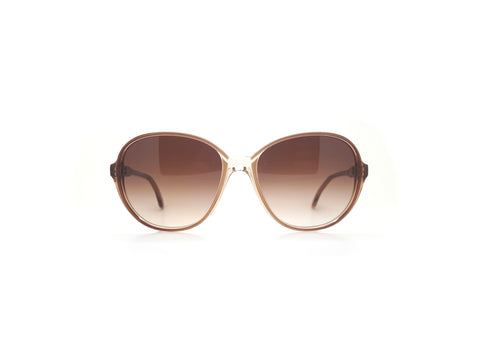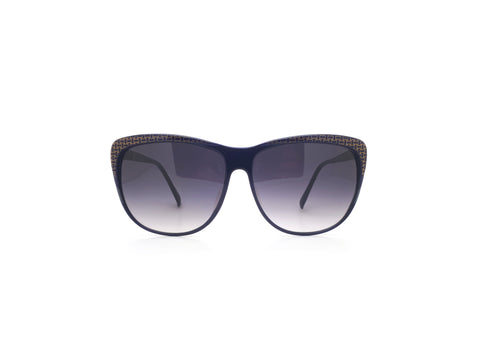Nowadays, it’s become increasingly popular for certain days and months to signify specific events or an appreciation for a particular topic. So what’s this month’s special topic? April officially signifies Jazz Appreciation Month - also known as JAM, rather aptly!
This observance aims at recognising and honouring the rich history, heritage and culture surrounding this popular music genre.
As such, this article serves as a reflection and celebration of jazz music and the impact it’s had on popular culture, which we’ll explore through a brief history of the genre. We’ll also take a look at some of our favourite jazz musicians, highlighting key elements of both they’re jazz style and, of course, their choice of eyewear!
A Brief History of Jazz Music
Jazz music originated in the African-American communities of southern America, most notably in New Orleans. Whilst the jazz we typically think of today is known for becoming most popular in the 1920s, it was actually a whole century earlier that its true origins came about.
Back in 1820, a tradition started whereby slaves at the time would gather in a space known as Congo Square to play music. This brought together individuals who came from various countries, each of whom would bring elements of their nation’s music to the mix. This harmonious blend of various African and Caribbean music types was eventually accompanied by marching band instruments over time, which ended up forming the genre known as ragtime.
Other music that was popular at the time and was brought to the American south by enslaved communities includes spiritual music, such as gospel, and blues - which became popular after the American Civil War. Over time, each of these music types amalgamated together to form the blueprints of what we recognise today as the jazz genre.
Staples of the Genre
There are many key characteristics that are widely associated with jazz music, although in general many struggle to define the genre due to the many elements it shares with other genres and the number of sub-genres it has itself.
With that said, one of its most well known and undisputable defining elements is improvisation. This is often seen in jazz music through the interaction and collaboration between the performer and the accompanying musicians and backup vocalists.
Especially during live performances, the same song could be performed differently on separate nights depending on the performer’s mood and interactions with the band or even audience members; this could see various aspects of the song changing, such as the melody, harmonies or the time signatures - essentially the rhythm and beats of the music itself.
This links to another arguable trait of jazz music, which is the presence of solos. For example, many early jazz songs would feature a call and response, whereby the performer would offer a word or phrase, which would then be responded to by another musician in the band as part of a solo.
Famous Jazz Musicians and Their Signature Styles
Ray Charles
Also known simply as the Genius, Ray Charles is regarded to be one of the most influential singers in history. From an early age, he took an interest in music and was taught to play the piano by a local cafe owner. He continued to learn piano at school, despite becoming blind at a young age, with his teacher teaching him how to read braille music.
He worked as a pianist for various people before his own music career came into fruition, with him signing with Atlantic Records in 1952, then ABC-Paramount in 1959. Some of his most notable hits include “Hit the Road Jack”, “I’ve Got a Woman” and “What’d I Say”.
Jazz Style
Whilst his primary genre of music is considered soul, one of the reasons he pioneered the music industry at the height of his popularity was through his innovative ability to combine jazz, blues, rhythm and blues and gospel styles into his music.
Not only did jazz music heavily influence the way he played the piano, but he also recorded some jazz music throughout his career, such as his LP titled The Great Ray Charles (1957).
Fashion Style
Ray Charles isn’t only famous for his musical talent, but also for his signature shaded glasses. It’s said that Ray started wearing sunglasses when performing after an artist was brought in to retouch some publicity images of the McSon Trio - a band he was in as a young adult - by painting sunglasses over his sightless eyes.
Ever since then, sunglasses became a key part of his image. He wore various styles of frames throughout his life, but perhaps the most recognisable are those with thick arms, black or tortoiseshell frames and tinted lenses.

We think these Sisley sunglasses are ideal for those looking for a pair of frames inspired by Ray Charles. The thick arms and tortoiseshell frames act as a subtle nod to many of the frames he wore himself, while their oversized style fits in with modern trends.
Herbie Hancock
Few artists in the music industry have had as influential an effect on electronic jazz than Herbie Hancock. Hancock started to play the piano from the age of seven and was recognised as a child prodigy. Despite never having a jazz teacher, having trained in classical piano, he developed an ear for the genre by listening to records of other jazz pianists.
He graduated with degrees in electrical engineering and music from Grinnell College in 1960 before moving to Chicago, when his career really began to take off. This includes his joining of Miles Davis’ Second Great Quintet - for which he was sought out by Davis himself, which could be seen as the catalyst for the illustrious career he’s had since.
Jazz Style
When it comes to his music, Hancock is known to be a pioneer of modern jazz improvisation, largely due to his experimentation of funk, electro and fusion styles of jazz, which saw him using a wide arrangement of synthesisers and electronics in the music he created.
His combination of electric jazz with funk and rock sounds influenced a whole decade of music throughout the 70s and into the 80s. One song in particular that really showcases his experimentation with such sounds is “Rockit”, from his 1983 album Future Shock, which remains one of the most recognisable sounds associated with early hip-hop culture.
Fashion Style
Herbie Hancock is another musician who’s been seen wearing various styles of frames throughout his career - even now he’s still seen donning stylish glasses in his 80s (and absolutely rocking them, in our opinion).
In the 60s and 70s, he was clearly inclined towards wearing a pair of aviators - very much looking the part for the era. Nowadays, he seems to prefer more rectangular styles of frames.

Whichever era of Hancock you’re most inspired by, we’ve got a pair of frames for you to pay homage to this musical legend. These Polaroid frames, for example, have a bit more angularity than traditional curved aviator frames - similar to those worn by Hancock back in the day.
Charles Lloyd
Like many great musicians, Charles Lloyd began playing music from an early age, having been given his first saxophone at the age of nine. He has since gone on to learn many other reed instruments, knowing how to play both the tenor and alto saxophones, the flute and the Hungarian tarogato, to name a few.
His performing work in the world of jazz started in his teens, when he played with the likes of George Coleman and Harold Mabern. Playing to his strengths and following his passion, Lloyd went on to study music at the University of Southern California (USC), during which time he spent his nights playing in L.A. jazz clubs alongside a number of leading west coast jazz artists.
Lloyd has since gone on to establish a vast discography as both a leader/co-leader and a sideman.
Jazz Style
Lloyd is not a jazz vocalist, but a jazz musician, primarily playing the tenor saxophone. His music often gives off the vibe of that classic, relaxing jazz many associate with the genre, with his musical abilities able to make melodies that are wonderfly pleasing to the ear.
Fashion Style
It’s apparent that Lloyd is a big fan of incorporating sunglasses into his style, as he is often seen wearing a pair in many of his performances. In terms of the shape, it’s clear that round frames are a favourite of his (although we have seen him in various other styles), whilst the lenses tend to be either mirrored or polarised.

If you want to channel Charles Lloyd’s style, then we recommend round frames by Haute Couture. The hint of tortoiseshell detailing on the bridge and at the ends of the arms add a subtle hint of flair for those who like to add a touch of elegance and colour to their outfits.
Jazz-Inspired Vintage Eyewear
If you’re a jazz enthusiast of any kind, or are simply a fan of many jazz legends’ aesthetics, then you’re in luck - in honour of Jazz Appreciation Month, we’ve put together our very own Jazz Collection, featuring frames inspired by some of our favourite jazz performers.





